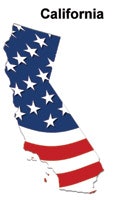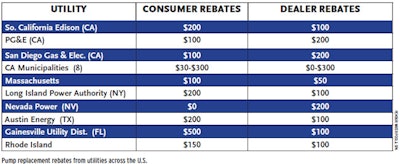
Elsewhere across the nation, most pool builders took little notice of the fact beyond perhaps a kindhearted concern for their neighbors in the Golden State.
It would have taken a gifted psychic to predict at the time that the California energy crisis would one day lead directly to dramatic changes in the design of pumps, heaters and other equipment, and dramatically alter the design of pools from San Diego to Quebec.
But That's What Is Happening
When the lights went out in California in 2001, the state government got serious about energy conservation. The reason it chose conservation over expanding supply as a solution to the problem was that building new plants has become prohibitively expensive and politically poisonous.
Communities (and of course their representatives that fancy reelection) fight passionately against locating plants in their districts. They find cleaner plants less objectionable, but such plants are much more expensive to build.
These political pressures produced consensus for conservation, and eventually landmark legislation - Title 20 and Title 24 (see sidebar, p. 42, for a brief refresher on these two mandates). Although originally meant exclusively for California, Titles 20 and 24 are creeping across the country in different forms, and for many of the same reasons. They will someday be, in essence, the way we build pools.
Of course there have been other factors behind this industry sea change, but it was California that crystallized thinking about exactly how to cut kilowatt hours around the pool.
"California put swimming pools and spas on the radar," says Steve Barnes, safety and compliance manager, Pentair Water Pool and Spa, Sanford, N.C., and chairman of APSP's technical committee, "and showed that swimming pool pumps are the No. 3 consumer of electricity behind air conditioners and water heaters. Now that that's widely known, when legislators - wherever they may be - start thinking about saving energy, they're going to look at pools, and they're going to look at pool pumps. Anytime you see an energy bill, you're likely to see pools and spas included."
There Will Be Bills
The first of such bills appears to be coming from Florida. Earlier this year, Florida Gov. Charlie Crist signed into law House Bill 7135, enacting several new energy and climate change policies. Among these was a mandate that Florida put together a building code in short order that will dramatically reduce energy usage in backyard pools.
APSP-15, the group in charge of developing energy standards for the Association of Pool and Spa Professionals, is working hard and fast on model code language that can be used by Florida in writing codes to meet the deadline, says Barnes, chairman of the committee. "We have to act quickly because Florida has passed a state law saying they've got to either come up with their own language for a standard or take somebody else's - and that language needs to be done by the end of the year so it can go into the Florida building code process next year and be implemented by July 1, 2011."
The long-term goal of APSP-15 is to come up with a national standard for energy-efficient pool building, but events have forced the group to simply get something on paper right now to help states draw up legislation. The group can go after a full-blown standard when time permits, Barnes says.
The urgency is due to the crucial need for uniformity. These incipient state laws must end up as consistent as possible, for a variety of self-evident reasons. When laws align, educational efforts are much easier, manufacturers can rationalize product lines and multi-state builders only have to learn one set of rules.
Clarity and uniformity of state building codes is what APSP-15 is focusing on. And without model code language to guide legislators, Barnes point out, they are likely to simply grab bits and pieces of California's Title 20. "And frequently when they do that, they grab whatever they understand, and what they don't understand or don't notice, they leave behind," leaving an incomplete and confusing building code.
"Title 20 is a 250-page document," explains Pentair's Jeff Farlow, also on the APSP-15 committee, "and pool pumps, like all the other appliances in it, are spread throughout the whole document. There's a section on definitions, another on performance criteria, another section on test standards to use. What people tend to do is pull out certain sections without any of the supporting documents that make it make sense and doable.

"The APSP-15 committee is trying to develop a standard that any state can adopt - perhaps make some modifications - but we want to offer an entire workable standard with all the definitions included instead of just a hodgepodge that would be adopted all over the nation.
"But the end result, in its effect, is going to be very much like Title 20."
Texas, Too
With Florida now committed alongside California, the other big pool building states are very likely to follow suit. Which ones?
"Well, for sure Texas," Barnes says, "because we actually talked them into holding off.
"We showed them that they were missing a bunch of pieces of Title 20 and 24 and that we're working on language to make things consistent. We asked them to let us get the model code language in line. That happened in June, and we promised to have a document ready for them the next time their legislators meet.
"Arizona is on the list as well, but I can't quantify how serious they are. Nevada is looking at it. And there are a bunch of states up in the Northeast."
Opinions Vary On These Developments
On one side are those who resent governmental involvement in the industry because of the burdens that accompany forced change, as well as the potential effect on their businesses.
"The bottom line for many builders," Barnes says, "is they're worried this will make stuff more expensive and people won't want to buy."
But others see these changes as a chance to do the job right. There can be no doubt in anyone's mind that for decades, a great many pools have been needlessly wasteful of their owners' money and the nation's energy. Three-horsepower pumps and small-diameter piping strung together with multiple 90-degree elbows have drained bank accounts and coal reserves for decades without any justification. These pools could have been kept cleaner for less than half the cost.
In that spirit, Steve Gutai, director of product management, hydraulics and combustion heater products, Zodiac Pools Systems, Vista, Calif., appreciates the flexibility these laws offer to tailor efficiency to individual customers depending on their means.
"I like the fact that Title 20 regulations give builders three options," he says. "They can go sub 1-horsepower in a single speed, they can go with a two-speed, or a multi/variable-speed pump. They're all good options, and that gives the builder/service technician/renovator/retailer a product they can sell at different price points that will satisfy their customer's needs."
Gutai notes that variable-speed pumps require a relatively large investment, but says, "Even a customer with a small $20,000 pool can still have an energy-efficient system with a small horsepower single-speed or two-speed pump."
"That's the issue," adds Barnes. "There's a lot that can be done with swimming pools to help our customers."
Be Sensible
The movement toward a more sensible pool circulation system has been proceeding for some time. Although it will be mandated in an increasing number of states, at its basic level, it's still the same industry-wide educational effort that has been underway for over a decade. Rodney McCall, national IntelliFlo field applications specialist, Pentair Water Pool And Spa, has been part of the struggle for years. Is the message getting through?
"Yes," he says, "but I talk to guys that are coming to seminars to learn more about variable speed and low flow. And of course they're getting the message. But there are a lot of guys who are out there still doing the same old thing. There are guys that get it, and guys that don't."
"At a very basic level," adds Farlow, "they've got to understand that running a pump longer and slower makes sense. We're still at that education level. Getting people to understand that.
"We're making strides, but it's an industry that is slow to change. I like to think of it as saving the world one pump at a time."
Comments or thoughts on this article? Please e-mail [email protected].
Titles 20 And 24 In A Nutshell
The several-hundred-page texts of Title 20 and Title 24 (slated to go into effect Jan. 1, 2010) make for a long and windy read; it's perhaps better suited as a late-night sleeping aid than a quick reference.
Rodney McCall, national IntelliFlo field applications specialist, Pentair Water Pool & Spa, agreed to provide a brief general summary.
"Title 20 deals with pumps," he says. "If you have a filtration pump of 1 total horsepower or greater, it has to be a two-speed or variable-speed pump.
"Title 24 deals with fittings, and will mandate pump size and how the system is built, including heaters, pipe size, elbow design, the filter that you use and even backwash valve size. They're still working on part of it, but basically you need to size your pump and pipe based on how many gallons are in the pool.
"That sizing is based on 6 fps on the suction side, 8 fps on the return side, and a 6-hour turnover rate. So if you have a 13,000-gallon pool, you divide that by 360 (the number of minutes in 6 hours) and that gives you 36 gpm. So you could plumb that pool with inch and a half plumbing - which, according to your friction loss table, allows up to 37 gpm without going over 6 fps.
"So for anything much larger than a 13,000-gallon pool, you would need larger than inch and a half pipe."
- S.W.








































